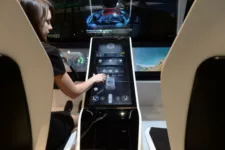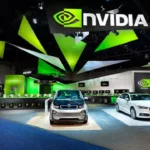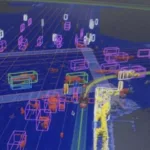One of the interesting displays at CES this month was the one by Corning where they showcased a car dashboard that was almost entirely flat panel displays. Companies like Audi and particularly Tesla have been very aggressive at this approach but Corning pushed the envelope by making about 95% of the dash displays. On top of that they announced they would be using Gorilla Glass for their Windshield of their stunning new Ford GT Supercar.
This layers on top of the coming wave of autonomous automobiles to suggest the car of tomorrow may be vastly different than the car of today.
The Glass Interior
Moving monitors into cars is hardly new as we’ve been putting them in the center console and either on the interior roof of cars or on the back of headrests for some time for the car’s AV systems. But, with the exception of a few cars we mostly stuck with traditional gauges for increments even though we increasingly stuck little displays in the around them. For instance my 2008 Audi A3 had a little display in between the speedometer and tachometer which tells me things that are wrong with the car. I generally hate that display as a result largely because I find it redundant given the car has begun coasting and the folks behind me are using their horns to subtly tell me something is wrong with my car.
Tesla was really the first to push the envelope with displays and not only changed the typical gauges in the dash to a display but put a monster panel in between the seats that you use to control all the car’s features and capabilities. Granted we found it to be a learning experience when my wife decided she’d adjust my seat on a fast sweeping turn and almost tossed me into the trunk (she is no longer allowed to touch the display on a Tesla when I’m driving). Coincidently this was when I discovered I could scream like a little girl.
In any case the benefits are clear, you can eliminate virtually all of the physical buttons which tend to wear out or often develop mechanical failures due to wear or dust, you can update the controls or correct problems remotely with software and not require a service visit, and you can allow the driver to create a more customized experience without having them hire a mechanic who may void the warranty.
This is particularly useful for the gauges in front of the driver because they can be converted for whatever the driver wants to do. For instance, in Tesla’s case, this primary gauge cluster now shows the lane lines on the road and the cars around the car you are in to help you avoid collisions and better navigate during harsh weather.
As we move to autonomous cars these displays could change to entertainment or showcase where Facebook friends are in proximity to the car. This potentially reduces the probability that you’ll give a friendly one fingered salute to one of the executives in your own company, your minister, or your spouse accidentally. Granted it will be little help if your lack of strategic thinking makes you do this on purpose.
Gorilla Glass Windshields
Thanks to a lot of construction where I live I tend to get new windshields annually and I’ve been a big proponent of using Gorilla Glass for windshields in order to lower this annoying cost. The first Gorilla Glass windshield is being put on the new Ford GT but not really to reduce chipping. It turns out that hardened glass can be made thinner and lighter than regular gas and given these cars compete with each other on performance (apparently folks gravitate toward the car that could put them in jail the longest if they get caught speeding) weight is very important. This is one of the reasons that while bending a wheel on your car likely costs $200 to fix and doing the same on a supercar can cost upwards of $10K which is likely why the tend to spend most of their lives in garages and not driving folks to and from work.
But as we move to electric cars weight plays a factor and the glass on a car, particularly one of the newer designs with a lot of window glass, and lowering that weight brings higher range so it isn’t just speed and acceleration that benefit from this it is gas mileage and range. And given electric cars live and die on range expect to see Gorilla Glass to move from Supercars to regular cars relatively quickly.
Now, another area that Corning is in is Smart Glass and this glass can auto darken which would be really cool alternative to window tinting and in a limousine or autonomous car would look kind of amazing.
Wrapping Up: Your Future Car Is A Rolling Tablet Invulnerable To Rocks
Or maybe less vulnerable would be more accurate. Actually, for the most part, if you want to see the future of displays in the car borrow or test drive a Tesla. It 90% of where Corning thinks, and I agree, the car market is going with the exception of hardened glass for the windows. There Ford is leading the way but the initial focus is weight and not chip resistance. It is funny to be talking about Ford and Tesla in the same sentence positively but, I expect, given Ford’s focus on innovation we’ll be doing that more and more this decade.
In any case as we move toward next decade your car is going to look more and more like a rolling tablet and, strangely, that’ll actually be a good thing.








